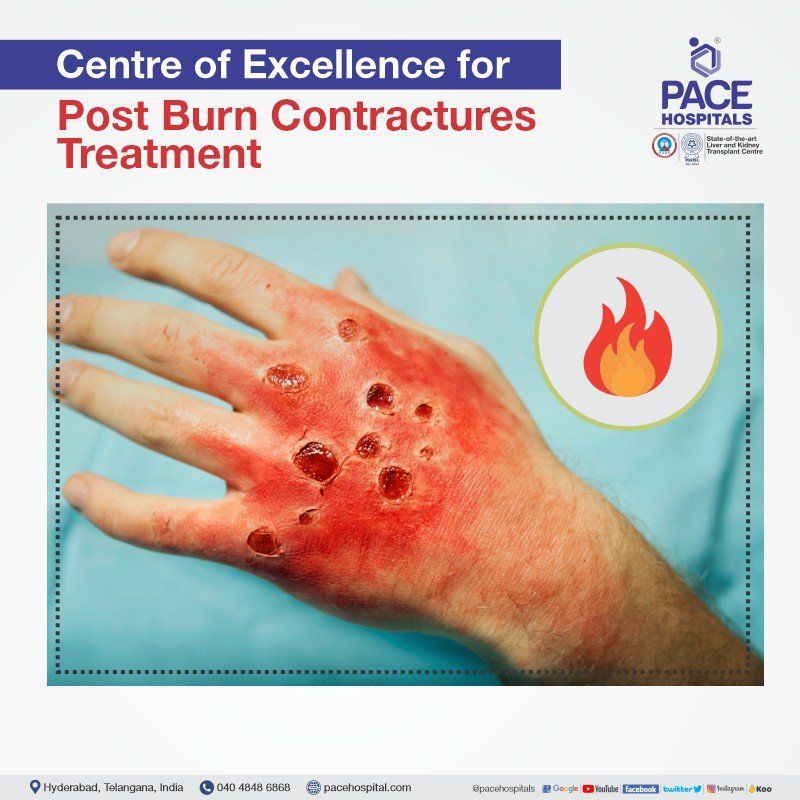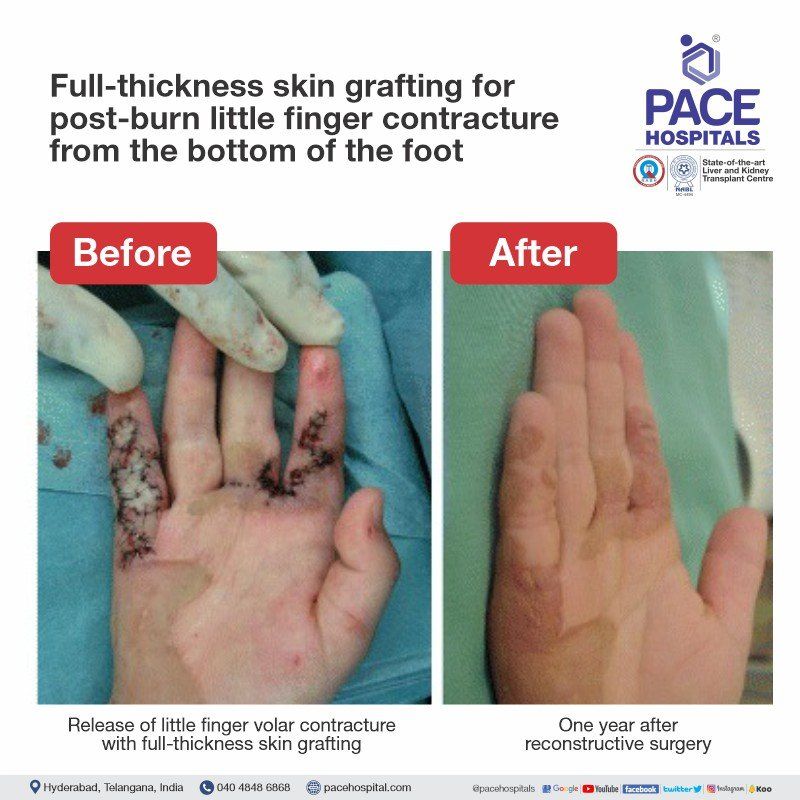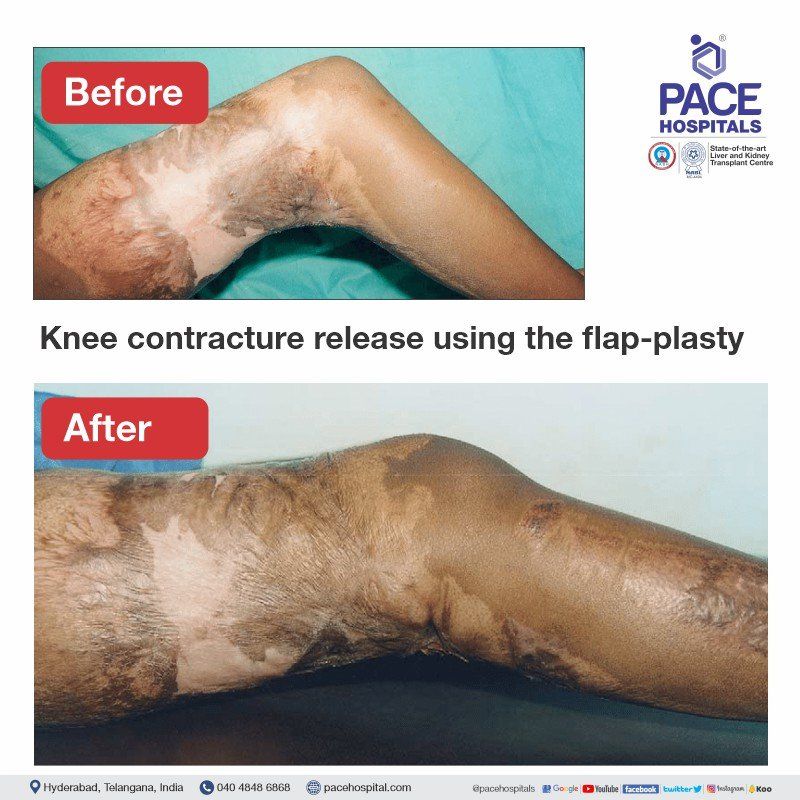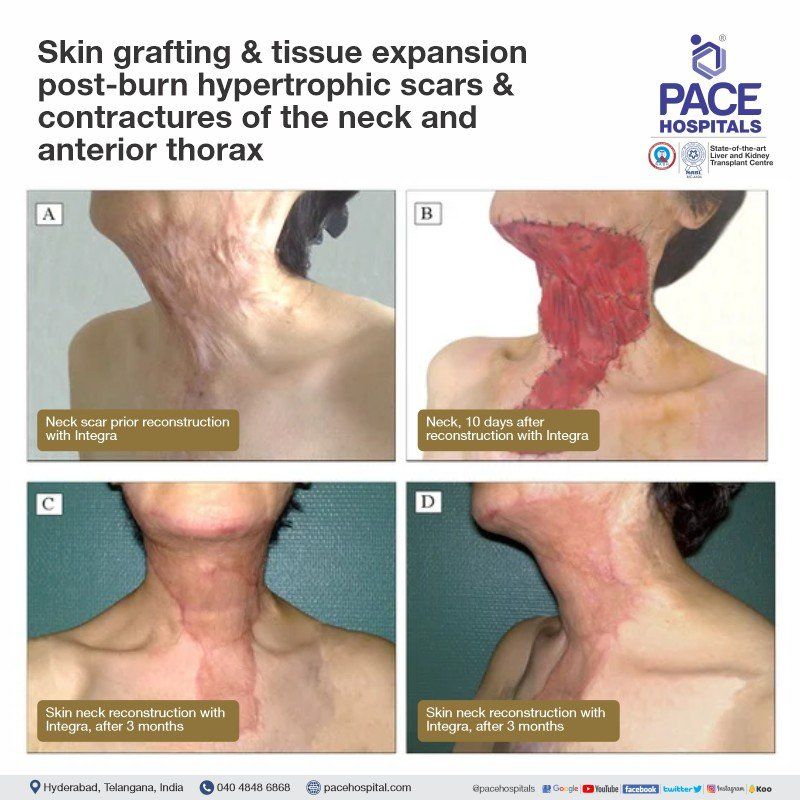Post Burn Contracture Treatment in Hyderabad | Surgery & Rehabilitation
At PACE Hospitals, team of burn specialist doctors - plastic and reconstructive surgeon, cosmetic surgeon, dermatologist, functional rehabilitation specialist are experienced in handling even the most complicated cases of post-burn scars and scar contractures by performing reconstruction of burn contracture surgery with using advanced techniques with minimal time and high success rate. The treatment options available are:
- Serial splinting and release of contracting bands with Z-plasties,
- Incision and skin grafting techniques
- Excision and resurfacing with skin grafts or flap repair
- Full-thickness skin grafts and local flaps
- Local rotation flaps
- Use of tissue expanders
- Free flap reconstruction
Request an appointment for Post-burn scar contractures treatment
Post Burn Contracture Treatment - appointment
- Why choose us -
1500+ Z-plasties, Full-thickness skin grafting and local flaps for Post-burn contractures
Team of the Best Plastic and Reconstructive surgeon, Cosmetic surgeon with 20+ years of expertise
Cost-effective treatment with 99.9% success rate
All insurance accepted with No-cost EMI option
Post burn contracture
A contracture is one of the complications of burn injury, which occurs when the scar thickness tightens mostly across a joint, resulting in a limitation of movements around the joint. It can also occur in areas apart from joints, like the chest, abdomen, etc., resulting in thickened, hardened, stiff tissue over the body part.
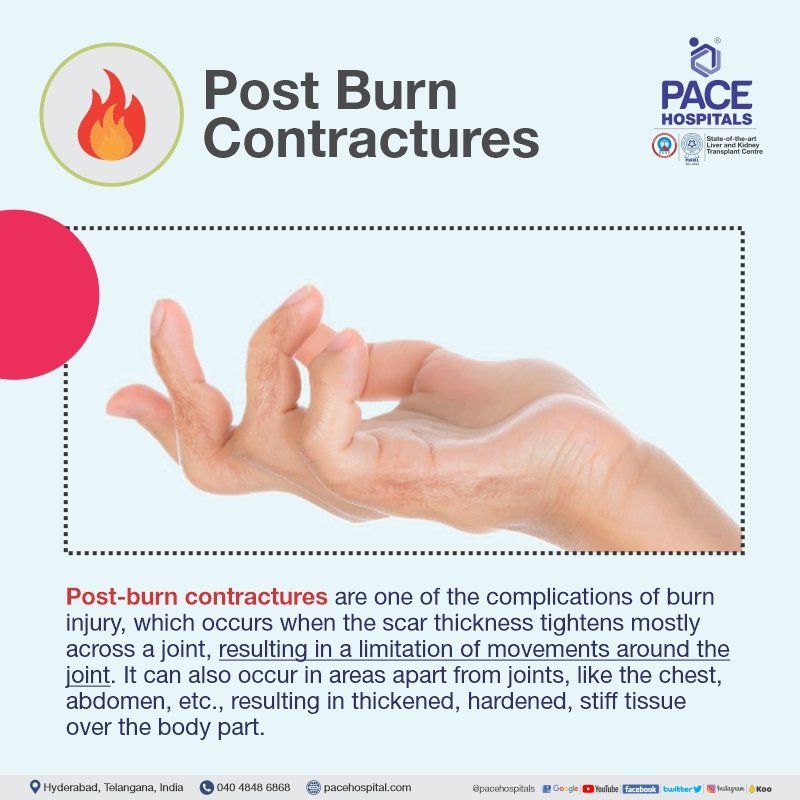
Based on the location, they are classified into:
- Face: Periorbital, Oral, Perioral (Area around the mouth), Nose, Other facial regions
- Upper limb: Axilla, Elbow, Wrist, Hand, Finger, Joints etc
- Lower limb: Groin, Knee, Ankle, Foot, Toes, Joints etc
- Chest
- Abdomen
- Back
- Neck
Based on the severity of the contracture, they are classified into:
- Single linear bands
- Multiple bands
Based on the function involved, they are classified into:
- Completely functional
- Partially functional
- Non-functional
Other classifications are done based on clinical grades and the body areas involved.
Advanced Centre for Burns and Post Burn Deformities treatment
PACE Hospitals is one of the Advanced Burns and Post Burn Deformities Treatment Hospital in Hyderabad backed up with plastic and reconstructive surgeon, cosmetic surgeon, dermatologist, functional rehabilitation specialist. Plastic & Reconstructive Surgery department at Pace Hospitals equipped with state-of-the-art facility and latest technology for Skin grafting surgery, burn deformity repair surgery and post burn contracture release surgery.
Frequently asked questions:
How do you treat a burn contracture?
The choice of non-surgical or surgical approach depends on location, extent and degree of contracture. Burn contractures can be treated with Z-plasties to release contracting bands, incisions and skin grafting or excision and resurfacing with skin grafts, artificial skin substitutes, local rotation flaps, tissue expanders with or without free flap.
Who are more prone to develop contractures?
The patient needs to visit a plastic surgeon after any burn injury. If the initial management of a burn patient is done by a plastic surgeon, it significantly reduces the severity of contracture compared to if it is done by any other doctor.
How do you prevent contracture from a burn?
- Wearing a splint across the joint keeps the burn part straight, which helps in the prevention of contracture.
- Through performing range of motion exercises and regular exercises.
- Encouraging daily activities like dressing, clothing, brushing, bathing, etc.
- Applying scar modification treatment protocol as per the plastic surgeon.
- How long does it take for contracture to develop?
- It depends upon the type of burn injury, the extent of burns, depth of burns, location and various other factors. However, you can minimise the formation of contracture by consulting a plastic surgeon after any burn injury.
Do I need to wear a compression garment?
Yes, your doctor might insist on wearing a compression garment. It protects your healing incisions from bacteria, improves your circulation, reduces pain or bearable when you cough, laugh or sneeze.
How long do I need to wear compression garments?
Plastic surgeons recommend wearing a compression garment throughout the day (it can be removed while having bath) for the initial 9 to 12 months, which might vary from a case-to-case basis, as it depends on the surgical procedure and extent of the patient's contracture. After around one year, depending on the patient's progress, the plastic surgeon might change the duration of wearing the compression garment from 24 hours/day to 12 hours/day for variable months.
What is the role of physiotherapy in Post burn contractures?
Physiotherapy plays a crucial role in the management of post burn contractures. Depending on the severity, it starts from day one after surgery and continues for months to years (in some cases). It helps to improve function and maintains the attained position after Post burn contracture surgery. In some cases, it might help to increase the range of motion.

